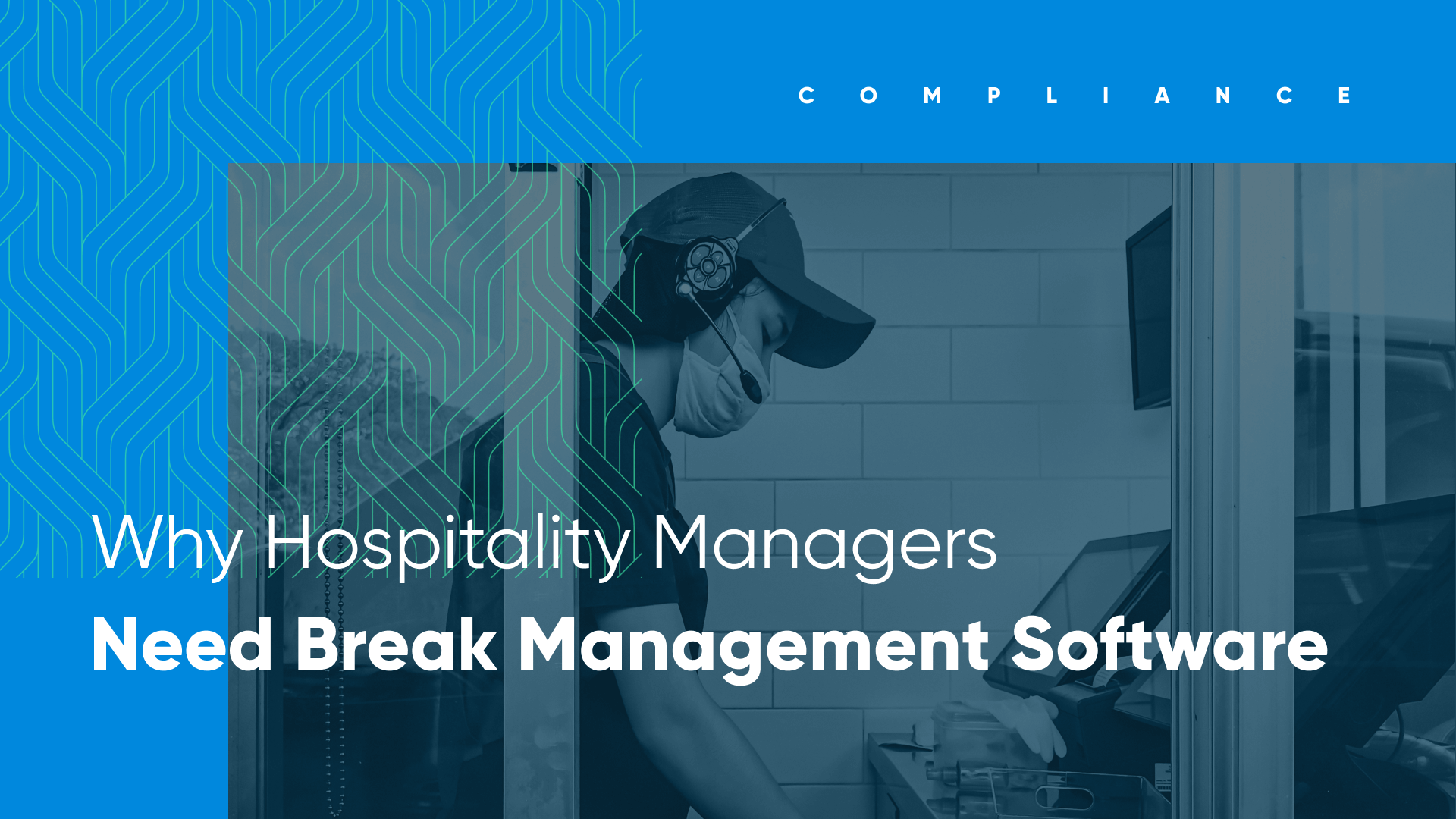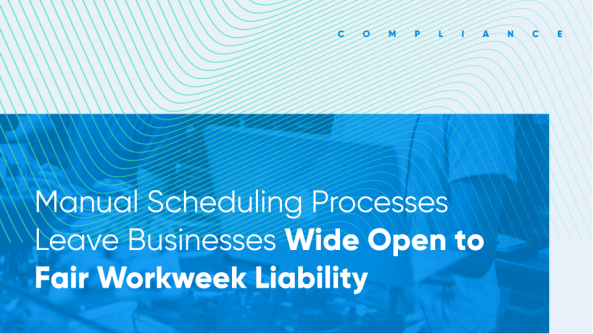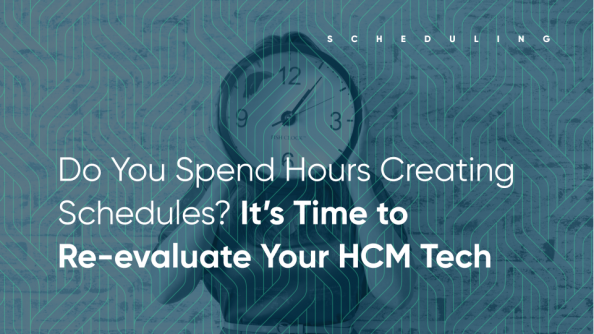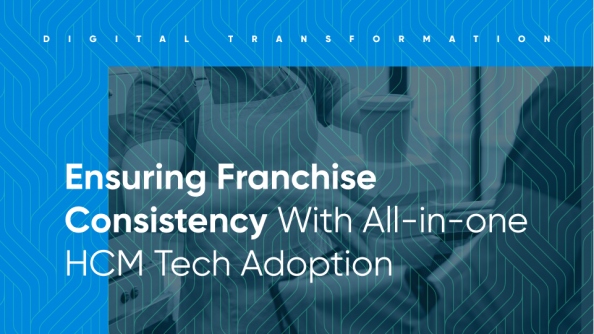Why Hospitality Managers Need Break Management Software

- By Harri Insider Team | March 23, 2021
Labor compliance is one of the most difficult and pressing challenges facing hospitality operators managing an hourly workforce. From paid and unpaid break management to predictive scheduling, the list of compliance requirements continues to grow.
With these laws come the need for employee Right to Rest periods, meal breaks, and rest breaks, all of which are contingent on an employee’s shift hours.
Granular scheduling management tools are growing in popularity as Fair Workweek and other wage and labor laws tighten their grip on the industry.
Types of breaks for hourly restaurant employees
While The Fair Labor Standards Act (FLSA) doesn’t require employers to give employees breaks, many states require breaks for hourly employees. This is especially true for businesses operating in a Fair Workweek jurisdiction, where Right to Rest periods are often required.
There are several types of breaks that hourly employees are eligible for depending on the length of their shift.
Right to Rest period
Fair Workweek labor laws require employers to include a rest period in employee schedules.
This means that an employee must have between 8-12 hours between work shifts. The exact break requirement varies by city and state.
Paid break
Paid breaks tend to be shorter, such as 5-20 minutes, and accrue an employee’s normal rate of pay. Employees may be eligible for pay after a certain number of hours have been worked, such as 1 10-minute break per every 4 hours worked.
Unpaid break and meal breaks
Unpaid breaks tend to be longer, such as a 30-minute break. Employees may be eligible for unpaid breaks after longer periods of time, such as 1 unpaid break per every 5 hours worked. Meal breaks tend to fall under this category.
Smarter break management software: all-in-one HCM platform
Violating employee break laws is a quick and easy way to accrue hefty fines, which is why hospitality businesses using break management tools benefit from smooth operations and labor-efficient practices.
Ensure break compliance with intelligent scheduling
Labor law compliance is one of the largest hurdles facing restaurants navigating employee break laws. Break management can be complicated, especially in legislation-heavy states like California where employees are given more power over breaks than employers.
Comprehensive scheduling platforms like Harri’s intelligent scheduling tool ensure that break compliance is built into the employee schedule no matter what jurisdiction your business operates out of.
As your managers build employee schedules, Harri automatically prompts managers to account for both paid and unpaid breaks for every eligible shift. For example, a 4-hour shift might show an alert requiring an input of 1 paid break. If the manager goes back and extends that shift to 6-hours, break requirements will be updated and also require the input of an unpaid break.
Because this happens on a shift-by-shift basis before a schedule can be published, compliance is ensured no matter how many employees you manage or schedule adjustments you make.
The same holds true for Right to Rest periods, which sometimes must be scheduled in order to maintain a quality level of service. Harri will alert managers if a shift violates an employee’s right to rest to prevent accidental non-compliance actions.
Interactive break waivers, rules, and automated break tracking
To circle back to California, employees are in complete control of their break schedules. A team member can come into work, decide they want to take an unpaid break later in their shift, then change their mind and rescind their unpaid break that same day. That employee can go back and forth as many times as they want and will never be at fault. But you as the manager are responsible for tracking and fulfilling break requests in real-time
Tracking this with pen and paper at scale can prove tricky in a hectic restaurant environment. And if your business falls under a non-compliance investigation down the road? You’ll be required to retrieve records of all break waivers and when breaks were given.
Failing to use an interactive break platform is a compliance disaster waiting to happen. However, an integrated HCM platform can ensure compliance without adding additional burden onto managers.
Providing employees with a break waiver at the point of clock-in ensures their break preferences are automatically tracked and implemented on a day-to-day basis. If an employee decides to waive and unwaive their break 20 times, it’s not up to the manager to keep track of every change. Instead, the employee can enter break preferences and changes as many times as needed at the time clock.
What’s more, managers can configure break rules and regulations to prevent employees from clocking in from a break early — something that could be chalked up as a non-compliance isolation even if early returns occur without a manager’s knowledge.
Not only do these features ensure full compliance, but it frees up managers’ time while guaranteeing that all employees are entitled to their earned breaks. And because these break waivers happen in a digital environment, all employee break records are stored and accessible from any device.
Understanding employee break data to optimize operations
Most employee breaks are managed through the POS. The problem with this process is that it silos clock-in and break-related data to the POS alone, preventing teams from accessing valuable labor optimization data.
There are a number of employee KPIs that operators can track to better understand and optimize labor. Say, for example, employees are voluntarily skipping breaks on a very frequent basis. That might be an indicator that you need to schedule more employees to a shift, else you risk burnout-related turnover.
A break management system should be able to report on the following KPIs:
- Breaks taken
- Daily break waiver status
- Days of the week worked for each employee
- Shift start and end times for each employee
- Right to rest period
- Overtime hours
- Premium payments: Payment amount, who they were paid to, and how often
The best break management software will tie together key the above data elements and empower your team to find the stories within the data. Operators using an all-in-one HCM platform to manage employees will see an advantage here, as well as in other administrative and compliance categories.
Digital break management is the future is restaurant labor optimization
Is pen-and-paper break management possible? Yes. Is it a smart process? Absolutely not.
Hospitality businesses that utilize an all-in-one HCM platform to handle anything and everything employee break related benefit from compliant processes, decreased administrative processes, and an overall smoother employee experience.
Learn how else Harri’s break management software keeps hospitality businesses accountable and compliant with labor and break laws.




















